

Please wait a moment!
The page is loading!


The page is loading!
The more you know, the more fun you’ll have! Learn how K-Motorboat racing works.
K-motorboat racing often yields unpredictable outcomes due to various influencing factors. Compared to other sports, it involves many variables to deduce, making it essential to understand helpful information about the races.
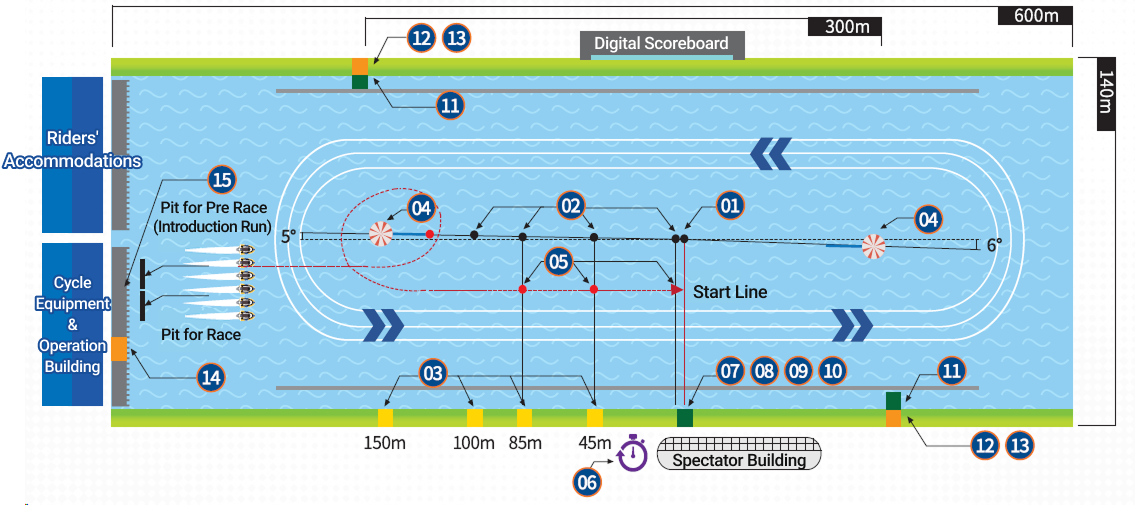
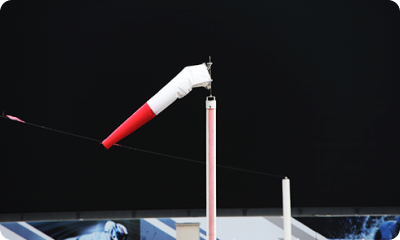
01 Centre Pole
The centre pole serves as the reference for confirming the start and finish points

02 Marking Poles
Poles indicating specific positions on the water surface, divided into 5m, 45m, 80m, and 100m markers
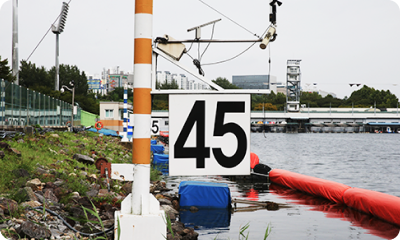
03 Marking Boards
Boards that show the position of the starting line, divided into 5m, 45m, 85m, 100m, and 150m markers
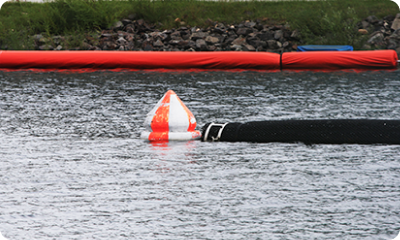
04 Turn Markers
Indicators marking the designated turning points (110cm in diameter, 95cm in height)
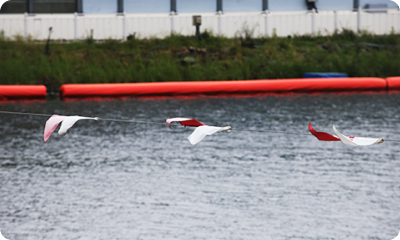
05 Overhead Wire
A wire connecting the 5m and 45m marking poles (plates) and the 80m marking pole to the 85m marking board. This serves as a critical reference for racers to identify the starting position. The connection between the 80m pole and the 85m board accounts for instantaneous speed and distance discrepancies between inner and outer racers.

06 Official clock
A clock used to signal the start for races using the flying start method (It includes a 2-minute light, a 1-minute hand, and a 12-second hand)
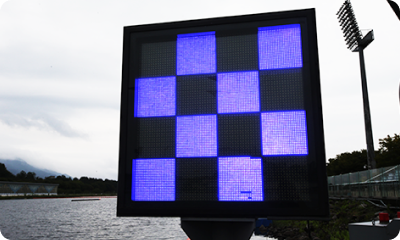
07 Checker Light
A signal device that flashes alternately around 15 seconds before the start and when crossing the finish line
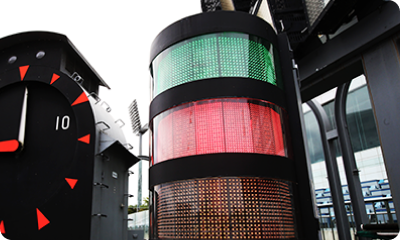
08 Three-Colour Signal Light
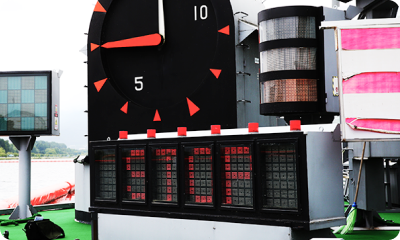
09 Stop Light
Lights up when the race is suspended
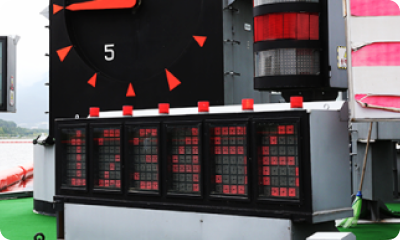
10 Lighting During Race Suspension
A red warning light that lights up to indicate a signal for disqualification or withdrawal during the race
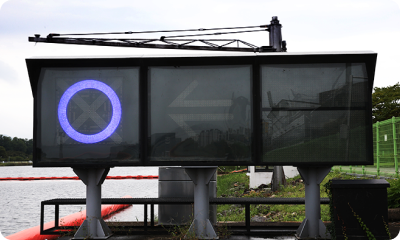
11 normal start light(online/flying start)
Displays “O” (blue) for a normal start and “X” for a normal start and "X" (red) for a start accident
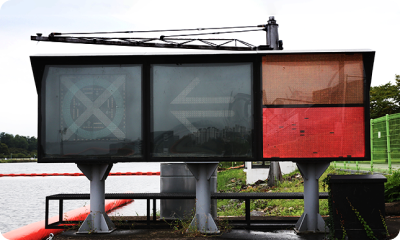
12 Hazard Signal Light
A signal device that flashes (red/yellow) during race accidents (capsizing or falling into the water)
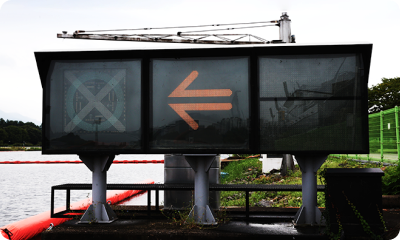
13 Sailing Direction Indicator
A signal device guiding the racing motorboats on direction when the hazard signal light is on
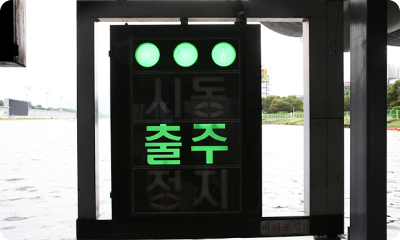
14 Starting Indicator
Installed in the dock departure pit to signal the racers with information about engine start, departure, or stopping
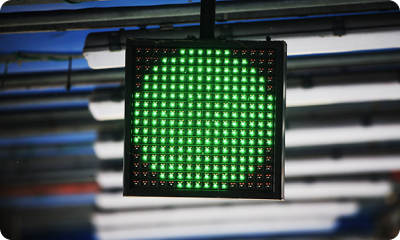
15 Normal Start Indicator (Online Start)
Displays "●" (green) for a normal start and "●" (red) for an abnormal start
Registration is only available to Racers who pass the qualification exam conducted by the Korea Sports Promotion Foundation.
A Boat Rider can register as such only after passing the Boat Rider candidacy selection exam, completing an 18-month boating training programme, and passing the prescribed test in accordance with the Track Cycling and Boat Racing Act.
Eligibility for Candidacy Selection Exam: Male and female aged between 19 and 30 years old, under 175cm and 68kg. Both eyes must have unaided vision of 0.8 or higher, with no colour blindness.
Written examination, practical examination, interview and medical check-up
2 years
Racers participating in races are awarded prize money based on the type of race and their placing rankings. Prize categories include general races, title races, and special races. Additionally, appearance allowances and preparatory allowances for races are provided.
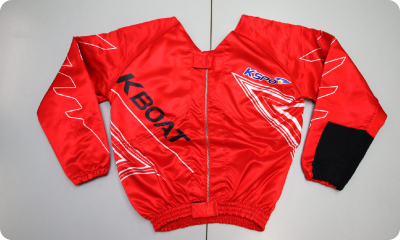
The outer fabric is polyester, and the lining is para-aramid to protect the Racer’s upper body. The jumper-shaped uniform is produced in six basic background colours, with each Racer's "number" affixed to the back for
spectator identification.
Colours: White (No. 1), Black (No. 2), Red (No. 3), Blue (No. 4), Yellow (No. 5), Green (No. 6).
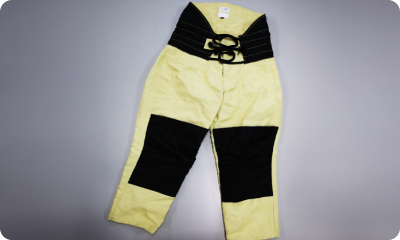
Worn under the waterproof cover, the bottoms are made with double-layered para-aramid fabric throughout, with key areas (such as the waist) featuring triple layers to protect the Racer's lower body from impacts and propeller-related injuries.
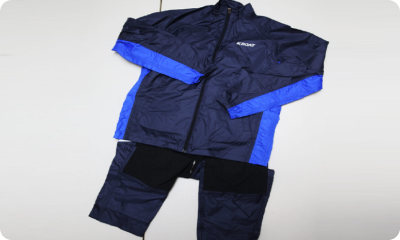
Designed to resist splashes and manufactured with functional nylon or equivalent materials with high waterproofing, water-repellence, and breathability.
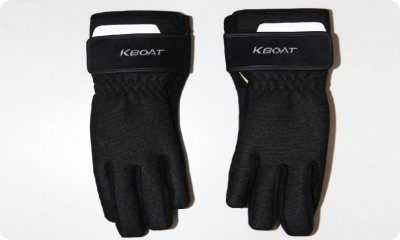
The outer layer is leather, allowing flexibility for operating motorboats and preventing slipping during steering. The inner lining is reinforced with para-aramid fibres to ensure the Racer's hand safety.
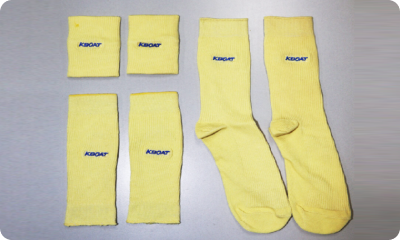
These are made from para-aramid material to protect the Racer's wrists, arms, and feet. They are stretchable to ensure a snug fit and maintain their original shape even after wear.

Designed to protect the Racer’s feet and ankles in the event of collisions or accidents, the soles feature anti-slip rubber, with one layer of titanium plating, three layers of para-aramid, and a polyurethane insole for enhanced safety. The upper section includes two layers of titanium plates, para-aramid, and waterproof neoprene material.
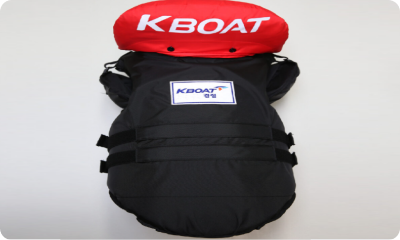
Made from vacuum-moulded epoxy resin and polyethylene fibres, the life jacket protects the Racer's body from external impacts and prevents drowning by allowing the wearer to remain nearly upright in water if submerged.
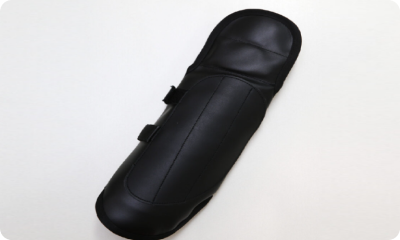
This gear protects the Racer’s left hand and arm from the back of the hand to the elbow. Manufactured with natural leather, para-aramid fibres, high-density N.B.R., and laminated glass fibres, the arm protector ensures safety during races.
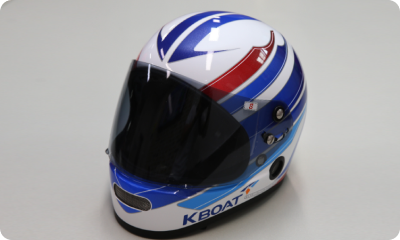
The helmet complies with Korea Industrial Standards (KS) for type-3 full-face safety helmets. It is designed to reduce external shocks to the head. The interior is free from sharp or hard objects that may cause injury and is constructed to remain buoyant in any water submersion event, ensuring Racer safety.
Motorboat racing judges apply the rules of K-Motorboat racing competitions with composure, impartiality, and strict adherence to their principles. They oversee and manage the entire race process, from the start to its progression and determination of final
rankings.
Decisions regarding Racers who commit acts that may violate racing regulations are based on thorough investigation and judgement. The causes of such acts, how they occurred, their progression, and the impact on the race and other Racers are
comprehensively analysed to make a final decision.
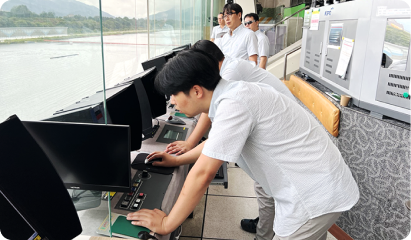

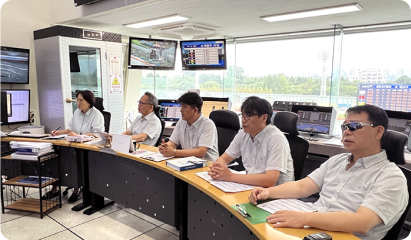

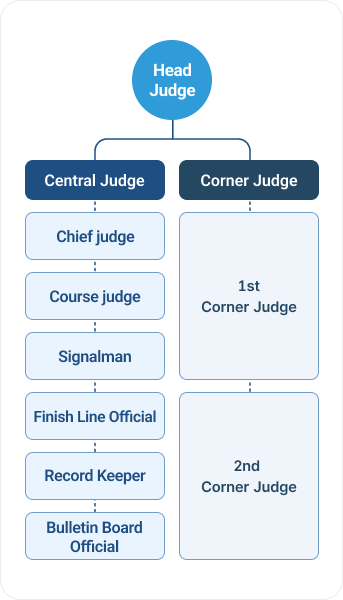
| Head Judge | Oversees central judgeing and operations, monitors and judges rule violations during introduction runs and races, as well as flying starts and ranking determinations |
|---|---|
| Chief Judge | Records race situations, reviews and judges rule violations, and acts on behalf of the Head Judge when necessary |
| Course Judge | Oversees race progression, monitors the Official clock and external signal equipment, and confirms final rankings |
| Signalman | Measures the introduction run time and lap time per round and announces the remaining laps |
| Finish Line Official | Determines start violations and arrival rankings |
| Record Keeper | Inputs and manages race results and judgement information into the race operation system |
| Bulletin Board Official | Operates the internal information display system and race progress monitoring system |
| Corner Judge | Monitors rule violations near the turn markers |

Boat racing, where white sprays rise on the blue water surface, uses single-seater motorboats with external motors attached. The maintenance of the boats and motors is carried out by professional mechanics, and Racers are assigned boats and motors through a draw before the race.
The boats are 100% developed with domestic technology, adhering to the low-centre-of-gravity principle to enhance stability. The motors also incorporate some standard components but were developed as domestic models, featuring a magnet system essential for boat racing and significantly improved propulsion and speed with custom-designed propellers. These advancements contribute greatly to the independent expertise in the small vessel sector and the development of related equipment industries.
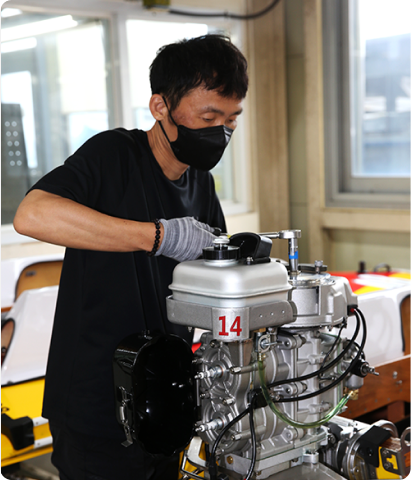
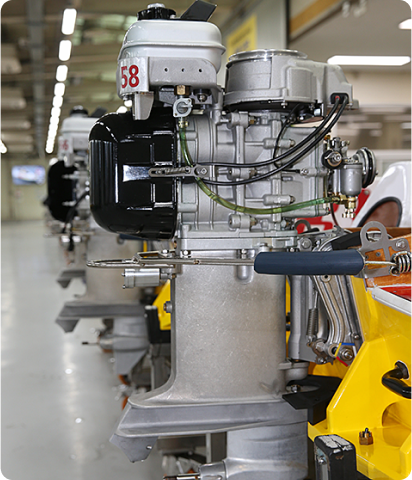
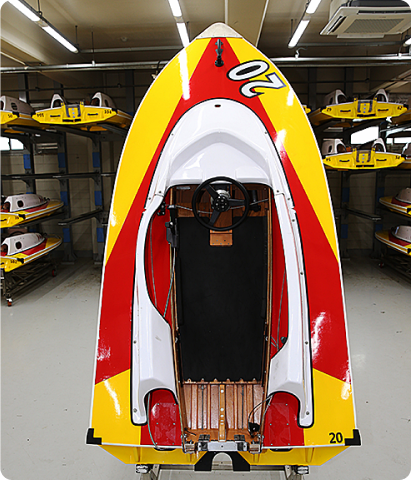
The motorboats are domestically manufactured by companies selected through the contract procedures of the Korea Sports Promotion Foundation. Primarily constructed with birch plywood and melanti plywood, the boats achieve high strength and lightweight
characteristics. To provide a thrilling and engaging race experience, the boat's performance is optimised.
The control and stability of these boats are on par with Japanese motorboats, which boast over 50 years of history. Furthermore, in terms of
structural strength and buoyancy restoration, the boats exhibit exceptional development.
Key equipment includes a steering wheel to control direction, a throttle lever for speed adjustment, cowling for Racer protection, and a soft bow.
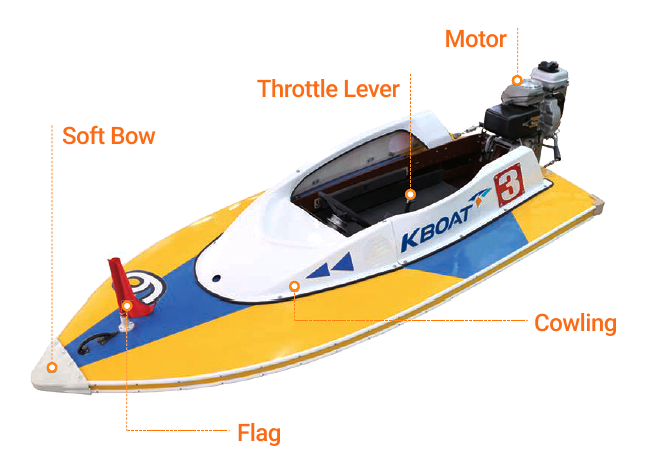
The motor is powered by a 403cc, two-stroke, two-cylinder engine. It consists of a power unit that generates propulsion and a lower unit that converts and transmits the propulsion to rotational motion.

| Overall Length | 2,770mm (excluding the soft bow) |
|---|---|
| Width | 1,320mm |
| Boat Weight | 75.5kg |
| Main Engine | 32 horsepower outboard drive |
| Seating Capacity | 1 person |
| Fuel Tank Capacity | 2,300ml |
| Motor Weight | 43kg |
| Speed | Approximately 40knots (75km/h) |